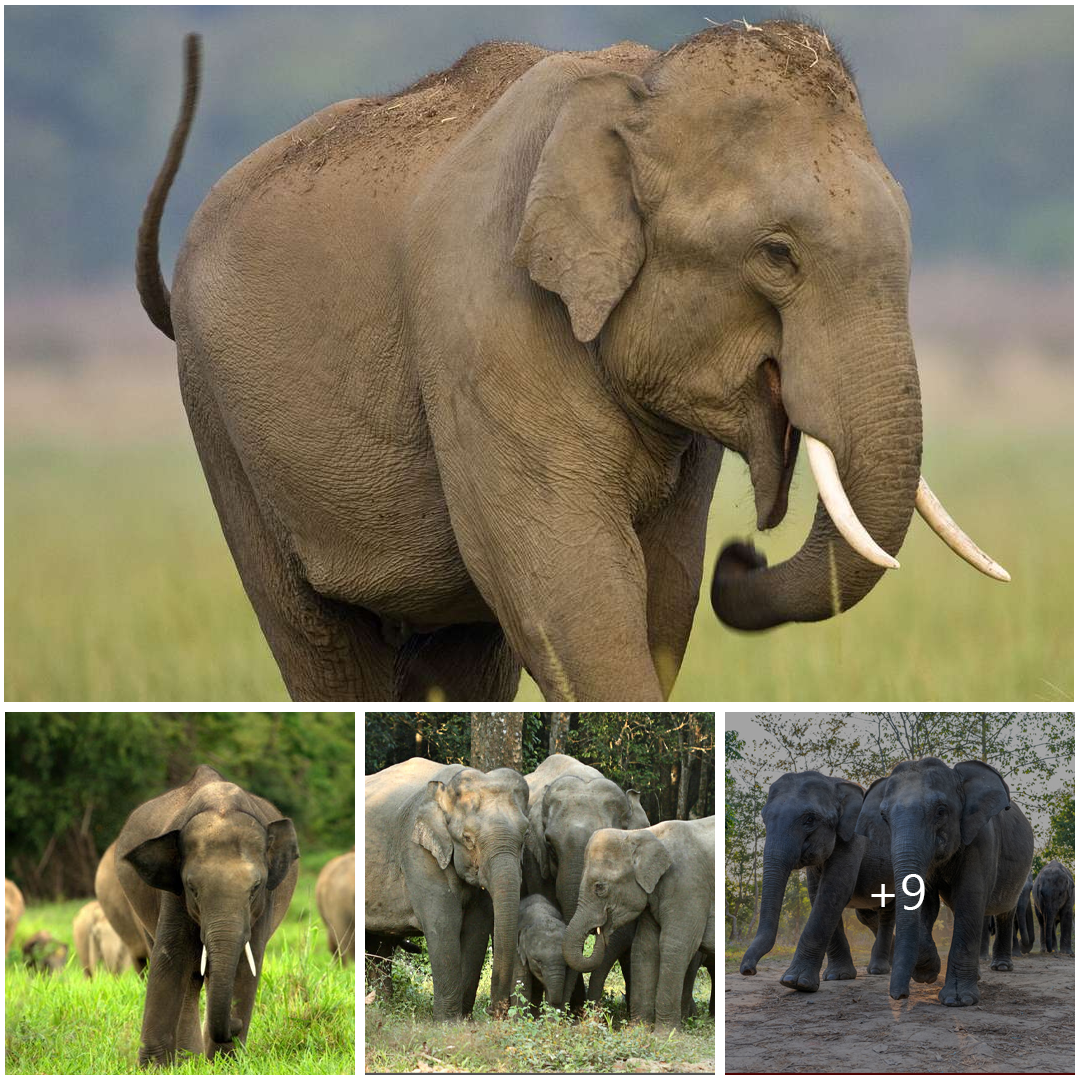
Asian elephant skin is gray, but parts sometimes lack color, especially on and around the ears, forehead and trunk. This de-pigmentation is believed to be controlled by genetics, nutrition and habitat, and generally develops as an elephant ages. Brownish to reddish hair covers the bodies of young elephants. The amount of hair reduces with age, and the color darkens.
Elephant skin varies from paper thin in some places, such as on the inside of the ears, to as thick as 1 inch (2.54 centimeters) in other places, such as around the back. Despite its thickness, the skin is sensitive due to a rich nerve supply. Elephants protect their skin from the sun and bugs by regularly covering themselves with dirt, sand and mud. Their large ears function as cooling devices. The ears contain many blood vessels. As an elephant flaps its ears on hot days, the blood in these veins cools, which then cools the elephant’s brain and travels back through the body, reducing body temperature by several degrees.
An elephant’s brain is large, weighing between 9 and 13 pounds (4 and 6 kilograms). Elephants are thought to be highly intelligent animals, and they have a great capacity to learn. In fact, much of their behavior is learned behavior rather than instinctive behavior.
Unlike other mammals, where the legs are in an angular position, the elephant’s legs are stacked in an almost vertical position under the body. This positioning, along with the detailed anatomy of their long bones, provides a strong support for the animal’s great weight. The vertical position of the limbs allows the elephant to remain standing for long periods without expending much energy. It also allows elephants to sleep while standing, as well as while lying down.
In most mammals, the bones contain a narrow cavity. In elephants, this cavity is lacking. Instead, a network of dense perforated bone occupies the space, which makes the bones stronger and able to withstand more pressure. The elephant’s skeleton is designed for mobility as well as strength. An elephant must have physical structures and coordinated muscular and neurological systems to accomplish survival skills, such as standing on their rear legs and climbing up and down steep slopes.
Elephants actually walk on their toes and have a thick, fibrous pad on the bottom of each foot. This pad acts as a shock absorber, protecting the leg and toe bones from jarring under its weight and cushioning each step.
The trunk is a fusion of the nose and upper lip. It contains no bones, but is composed of muscles, blood and lymph vessels, nerves, little fat, connective tissues, skin, hair and bristles. Cartilage is found only at the base of the trunk, dividing the nostrils. The trunk has about 150,000 muscle units and tendons that provide the elephant precision, as well as strength of movement. These often tiny muscle units tend to be arranged radially or longitudinally and, by acting against one another, allow the trunk to be moved in any direction. Although delicate in its movements, the trunk is also a very powerful organ that can lift heavy objects with ease.
Asian elephants have one small projection at the end of their trunk, called a “finger,” which aids with precision. Elephants use their trunks to take up water and squirt it into their mouths. The trunk is capable of performing many other functions as well, including feeding, snorkeling, dusting, smelling, sifting, sorting, touching, sound production and communication, lifting, pushing, defense and offense. It can hold about 2 gallons (7.57 liters) of water. Senses of smell and touch are very important for elephants. Their trunks help them “know” their world.
Asian elephants have six sets of teeth, all six of which are present in the skull at birth. They are, however, very small. Each successive set of teeth is larger, more complex and lasts longer than the previous set. As a result, an elephant’s skull grows throughout its lifetime to accommodate the new and ever-larger teeth. The teeth are replaced in a horizontal progression, similar to that of a conveyor belt. The worn teeth move forward, break and fall out of the mouth or are swallowed. An elephant’s age can be estimated by examining molar sequence and wear.
Tusks are modified upper incisors that grow throughout an individual’s life at a rate of several inches per year. They are composed of ivory, a material similar to bone that is made primarily of calcium and phosphate. The tusk has a pulp cavity containing nerve tissues. In an adult animal, about two-thirds of the tusk is visible while the remaining one-third is embedded in the socket, or sulcus, in the cranium.
Newly developing tusks have a conical cap of smooth enamel that eventually wears off. Not all elephants develop visible tusks; in the Asian species, only some males have large, prominent tusks. Most female and some male Asian elephants have small tusks, called tushes, which seldom protrude more than an inch or two from the lip line. Tushes have a slightly different composition than tusks. They are small and brittle, causing them to easily break. A significant number of adult male Asian elephants are tuskless. The percentage of males with tusks varies by region, with less than 10 percent in Sri Lanka to approximately 90 percent in India. This disparity may be a reflection of the intensity of past ivory hunting.
In the African elephant species, generally, but not always, both the males and females have tusks. Tusks are extremely useful, multipurpose instruments. Elephants use them to dig for water, salt, minerals and roots; to debark trees; as levers to manipulate objects in their environment; for rescuing calves; for threat displays; as weapons for defense and offense; as trunk rests; and as protection for the trunk.





